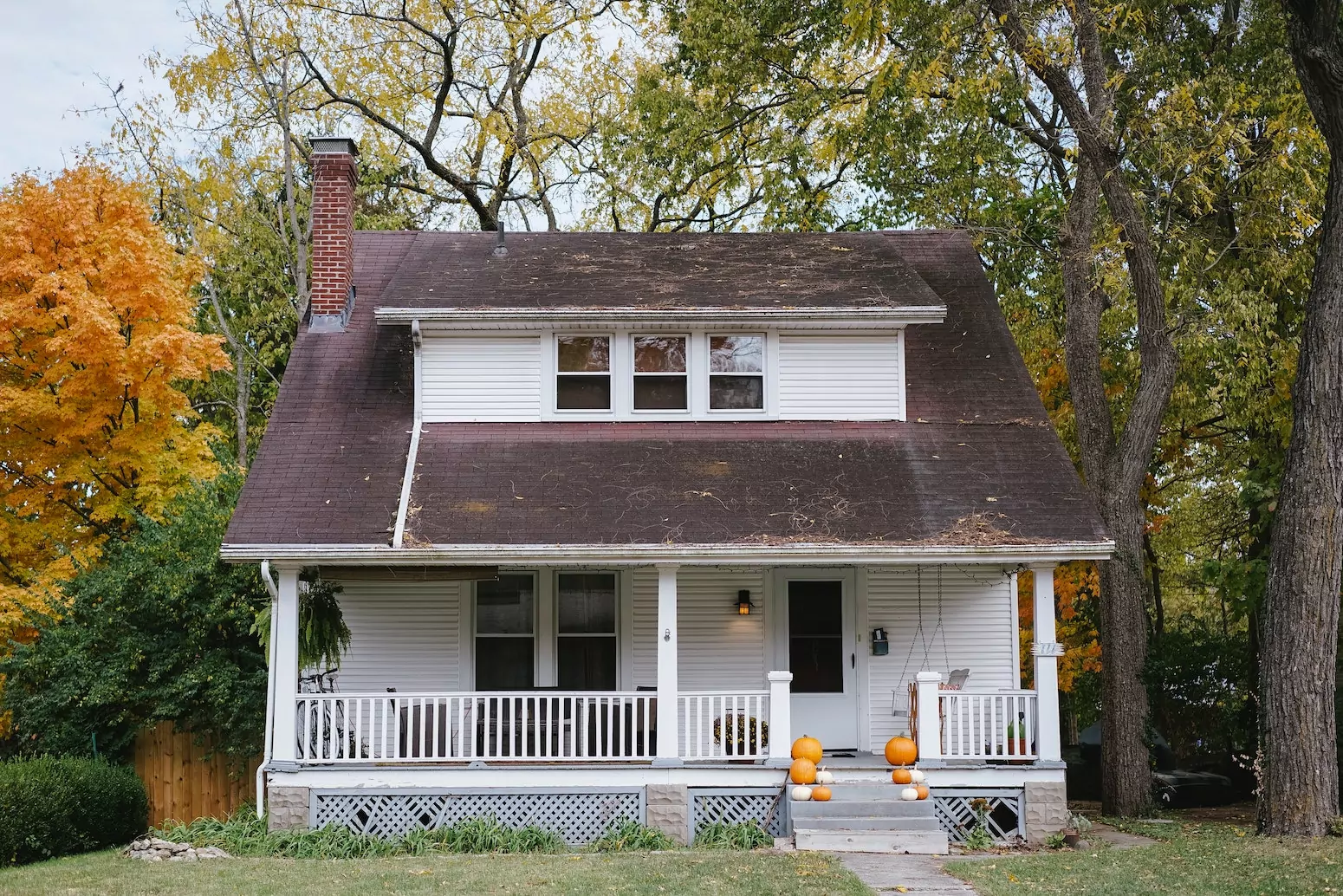As a real estate investor, you know that financing is a critical step in growing your portfolio. If you’re eyeing the booming short-term rental (STR) market, finding the right rental property financing is essential. Financing a property intended for short-term rentals, such as an Airbnb or VRBO, differs significantly from securing a loan for a primary residence or a long-term rental.
This guide will walk you through the types of [rental property loans] available specifically for STRs and how you can qualify. Airbnb loans differ from traditional mortgages, requiring investors to understand specific requirements and options like DSCR loans and alternative short-term rental financing.
Key takeaways
- Financing short-term rentals requires specific loan products like DSCR loans, not typical conventional mortgages.
- DSCR loans qualify borrowers based on the property’s projected rental income, not personal income or tax returns.
- Lenders for STRs often require a higher down payment, typically between 20% and 30%.
- A minimum credit score is necessary, often 620 or higher, with 680+ preferred for better terms.
- Market data and property condition play significant roles in the STR loan approval process.
Understanding short-term rental loans
Financing a property intended for short-term rentals presents unique challenges. These properties function more like businesses than traditional residences, with variable income streams. Traditional lenders often view the fluctuating income of an STR as too risky for a standard mortgage. This means you need to explore different types of financing designed for investment properties.
Traditional mortgages often have owner-occupancy requirements or restrictions on how frequently you can rent the property, making them unsuitable for dedicated STRs. Airbnb loans and other short-term rental financing options are tailored to the unique nature of this investment strategy.
They account for the property’s income-generating potential rather than relying solely on your financial profile. Understanding these differences is key to successful [rental property financing] for your STR venture.
Top short-term rental financing options
Investors looking to finance short-term rentals have several pathways beyond traditional mortgages. Choosing the right type of loan for investment property depends on your financial situation, the property type, and your investment strategy.
Conventional loans are typically designed for primary residences or long-term rental properties. They often have stricter requirements regarding rental income calculation and may not count income from short-term stays, making them less ideal for dedicated STRs. Second Home Loans may seem appealing, but they restrict renting to no more than 180 days per year, making them unsuitable for full-time STRs.
Investment property loans, generally, are designed for properties not occupied by the owner. However, even within this category, loans specifically for STRs are distinct due to the income model.
Options like commercial loans for rental property might apply for multi-unit properties, while loans like SBA loans for real estate or SBA 7a loan requirements are generally not the best fit for standard residential investment properties. FHA loans for investment properties and VA loans for rental properties are also typically not options for pure investment properties.
DSCR loans: Debt service coverage ratio
DSCR loans are increasingly popular for financing short-term rentals. These loans focus on the property’s ability to generate enough income to cover its debt payments. The Debt Service Coverage Ratio (DSCR) is calculated by dividing the property’s net operating income by its total debt service (mortgage principal and interest payments).
DSCR loans are favored because they qualify based on projected rental income instead of your personal income or tax returns. This is particularly beneficial for investors with fluctuating personal income or those who prefer not to use personal tax returns for qualification.
Many DSCR lenders are explicitly STR-friendly, using data from platforms like AirDNA for qualification. They can use projected income for properties without a year of operating history. Using DSCR loans often allows borrowing under an LLC, providing valuable liability protection. Additionally, these loans may not show up on your credit reports.
Hard money bridge loans
Hard money or bridge loans are short-term financing options often used for property purchases requiring significant renovation. They are typically asset-based, relying more on the property’s value and potential than on your creditworthiness. These loans carry higher interest rates and fees but offer quick access to capital.
Investors might use hard money loans to acquire and renovate a property quickly, then refinance into a DSCR or other long-term loan once the property is rent-ready.
HELOCs
A Home Equity Line of Credit (HELOC) on an existing property can be another source of funds for an STR investment. You can use a HELOC to access equity from your primary residence or another investment property. This capital can then serve as the down payment or fund renovations for the STR.
HELOCs offer flexibility, allowing you to borrow funds as needed up to a certain limit. However, using your primary residence equity introduces personal risk, so consider this option carefully.
Key requirements for a short-term rental loan
Qualifying for a short-term rental loan involves meeting specific criteria, which can differ from traditional mortgages. Lenders assess both your financial health and the property’s income potential.
Credit score
Most STR lenders require a minimum credit score of 620 or higher. A score of 680 or above is generally preferred to secure better loan terms and interest rates. Maintaining a healthy credit score is crucial for accessing competitive financing.
Down payment expectations
Expect to put down a significant down payment for a short-term rental loan. Typical vacation home or STR loans require a down payment of 20% to 30%. Some lenders may require as much as 35%, depending on your credit score and the property’s projected performance.
Debt service coverage ratio explained
The DSCR is a key metric for STR loans. Lenders use it to determine if the property’s income can support the loan payments. A DSCR of 1.25, for example, means the property’s net operating income is 1.25 times the annual debt service.
Lenders typically look for a DSCR of 1.00 or higher, meaning the property’s income at least covers the mortgage payment. Higher DSCRs often result in more favorable loan terms. For properties without historical STR income, lenders may rely on third-party data and projections from sources like AirDNA to calculate the projected DSCR.
Cash reserves
Lenders often require borrowers to have cash reserves on hand. These reserves demonstrate your ability to cover mortgage payments during potential vacancies or unexpected expenses. The required amount typically ranges from 6 to 12 months of principal, interest, taxes, and insurance (PITI) payments.
Property condition requirements
The condition of the property is vital for STR financing. Properties need to be “rent-ready,” functional, sound, and clean. Properties requiring major structural repairs or extensive renovations may not qualify for standard STR loans and might need alternative financing like hard money. An appraisal and property inspection will assess the property’s condition and market value.
The short-term rental loan application process
Securing a short-term rental loan involves several steps. Being prepared and organized can help streamline the process and increase your chances of approval.
How to prepare
Start by researching potential lenders who specialize in investment properties and STRs. Understand their specific requirements and loan products. Research the market you’re investing in; lenders will evaluate its potential for short-term rental income using data from sources like AirDNA. Prepare to meet the down payment and reserve requirements, which often means having 20-35% of the purchase price available.
Required documentation
Lenders will require various documents to assess your eligibility and the property’s viability. These typically include identification, bank statements to verify funds for the down payment and reserves, and property-specific documents like insurance information and title reports.
If financing under an LLC, you’ll need entity documentation (Visio Lending). For DSCR loans, the focus will be heavily on the property’s projected or historical income data. Knowing how to get a loan for a rental property involves gathering all necessary paperwork upfront.
What to expect
After submitting your application, expect the lender to order an appraisal to determine the property’s market value and potential rental income. Underwriting will review your financial profile and the property details.
The process concludes with closing, where you finalize the loan agreement and transfer ownership. Closing times can vary depending on the lender and loan type.
Choosing the right STR lender
Selecting a lender familiar with short-term rentals is crucial. Not all investment property lenders are equally equipped to evaluate the unique income model of an STR. Look for lenders who explicitly offer DSCR loans for STRs and understand how to use data like AirDNA projections for qualification.
Some lenders specialize in specific property types or states, so researching lenders with experience in your target market is beneficial. For instance, finding investment property loans in Florida might involve looking for lenders active in that specific state’s market.
Once you secure your STR loan, managing the income and expenses of your rental business efficiently is paramount. Baselane offers banking and bookkeeping solutions specifically designed for rental property investors. You can use Baselane accounts to organize income and expenses by property, providing a clear financial picture.
Baselane’s bookkeeping tools can automatically categorize transactions, saving you time and simplifying reporting, which is essential for understanding your property’s DSCR over time and staying on top of your mortgage obligations.
Get quick and easy financing at competitive rates from top lenders across 48 states.
Short-term rental market trends
Staying informed about market trends is vital for successful STR investing and financing. Several key indicators suggest continued opportunity in 2025, alongside potential challenges.
US STR demand is forecasted to grow 6.8% in 2025. Supply is projected to reach 1,757,602 listings in 2025. While demand is growing, increasing supply indicates growing competition among hosts.
Average daily rates (ADR) are expected to rise by 2.1% in 2025, and revenue per available rental (RevPAR) is projected to grow by 2.9%. These growth projections suggest continued profitability, supporting the viability of investments for lenders. However, mortgage rates for rental property, including STRs, were around 6.85% for a 30-year fixed loan as of February 2025.
Rates are not expected to decrease significantly in 2025, which can impact profitability and borrowing power. Slower home price growth might create new buyer opportunities, but regulatory scrutiny of STRs is increasing in some markets, potentially impacting operations and supply.
Understanding these trends helps you assess market viability and can inform discussions with lenders about projected income and risk.
Bottom line
Financing a short-term rental property requires navigating specialized loan products designed for investment income. DSCR loans stand out as a particularly relevant option, allowing investors to leverage the property’s income potential for qualification. Understanding the specific requirements for credit score, down payment, and property condition is crucial for success.
By researching lenders familiar with the STR market and preparing your documentation thoroughly, you can secure the financing needed to acquire and grow your short-term rental portfolio.
Managing the financial aspects of your STR is critical once you have financing. Baselane provides integrated banking and bookkeeping tools tailored for rental property investors. This helps you organize income, track expenses effortlessly, and gain clarity on your property’s performance, making managing your loan obligations and maximizing returns simpler.
Learn more about how Baselane can help streamline your rental property finances. Sign up for free today.
FAQs
Yes, many lenders specializing in Airbnb loans or DSCR loans will use projected or historical income from platforms like Airbnb or VRBO to help you qualify, rather than relying solely on personal income or tax returns.
There is typically no technical difference. Airbnb loan is often used informally to refer to a loan for a property intended as a short-term rental (STR), regardless of the specific booking platform used.
Yes, financing options exist for multi-unit properties intended for short-term rentals, though the loan type might fall under a commercial loan for rental property, depending on the number of units.
Yes, DSCR loans are a popular choice for financing properties intended for Airbnb or other short-term rental platforms because qualification is based on the property's expected rental income.
The minimum down payment for a short-term rental loan is typically between 20% and 30%, and can sometimes be higher, depending on the lender and the property's income potential.
Yes, loans specifically designed for investment properties, including STRs, typically do not allow the owner to occupy the property as a primary residence. Second Home Loans, which have owner occupancy but limit rental days, are generally unsuitable for full-time STRs.
Yes, you can refinance a short-term rental property. DSCR loans are often used for refinancing STRs, allowing you to access equity or potentially secure better terms based on the property's established income.








